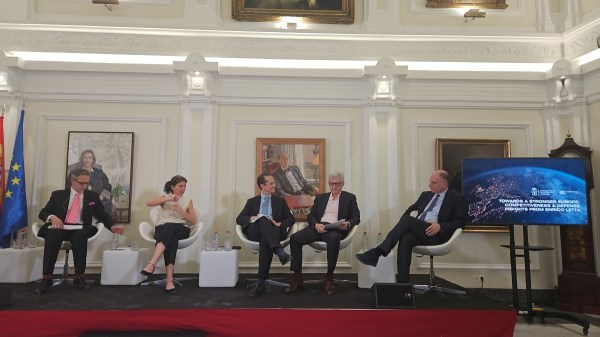Brief history of the e-commerce moratorium
In 1998, at the 2nd WTO Ministerial Conference, Members adopted the Geneva Ministerial Declaration on Global Electronic Commerce. A moratorium on the imposition of tariffs on electronic transmissions was then imposed. Since then, the moratorium has been successively renewed at each Ministerial Conference. Consequently, Members have not been able to impose tariffs on any electronic transmissions since 1998. Undoubtedly, over the past 25 years, the moratorium has been one of the elements that have contributed to the development of digital trade.
The first question that arises is what are we talking about “electronic transmission”?
Electronic transmissions have not yet been defined. This is certainly the first part of the problem. Electronic commerce, however, is defined as the “production, distribution, marketing, sale or delivery of goods and services by electronic means”.
In short, technologies such as 3D printing, which enables the electronic transmission of goods, would be included in the scope of e-commerce. Even the electronic transmission of audiovisual content, or streaming, throughplatforms such as Netflix, Spotify, etc. is considered to be covered as e-commerce.
The second question is whether the Moratorium affects all countries equally
The answer is No. However, it is not clear to what extent they are affected and whether it could be addressed through other means.
On one hand, there are those who believe that the non-imposition of tariffs has led to massive revenue losses for developing countries. The potential revenue loss is estimated to have exceeded USD 1 billion for developing countries, such as India, between 2017-20. To put things in perspective: it took approximately USD 4 billion to finance two injections of the COVID vaccine in these countries.
This revenue loss is compounded by the fact that these developing countries are net importers of these “online importers”. The lack of a defined regulatory framework for the e-commerce sector in developing countries means that domestic SMEs are unable to compete in international markets or contribute to their domestic markets. The General Agreement on Trade in Services (GATS) allows developing countries to liberalise trade in services at their own pace. However, the moratorium acts as an obstacle to this flexibility.
On the other hand, there are those who consider the impact of the moratorium to be relatively limited. This is the stance maintained by the OECD and has been reflected in various studies.
It is suggested that the revenue lost as a percentage of total revenue is relatively small (0.08-0.23% of total revenue). It has been argued that any loss of customs revenue can be covered through internal taxes. However, any tariff increases are passed on to consumers, which will limit access to technology in developing countries, negatively impacting digital inclusion.
Furthermore, electronic transmissions can reduce trade costs, which benefits the global economy as a whole. The digitisation of international trade is one of the elements currently considered to have the greatest potential to further the development of international trade. As the OECD argues, the benefits of the Moratorium outweigh the disadvantages it may cause and, in any case, the disadvantages can be addressed through the imposition of local taxes or indirect taxes on the goods and services targeted by the Moratorium.
If the upcoming moratorium is not permanently extended at the next WTO Ministerial Conference meeting, countries could include Non-Imposition of Customs Dutiesclauses in bilateral agreements, which could result in a disparate and non-harmonised set of rules, rather than a universal, non-multilateral standard. This could have a negative impact on cross-border trade in services, a situation that is already occurring due to the increasing regulation of digital transactions and cross-border data flow.











